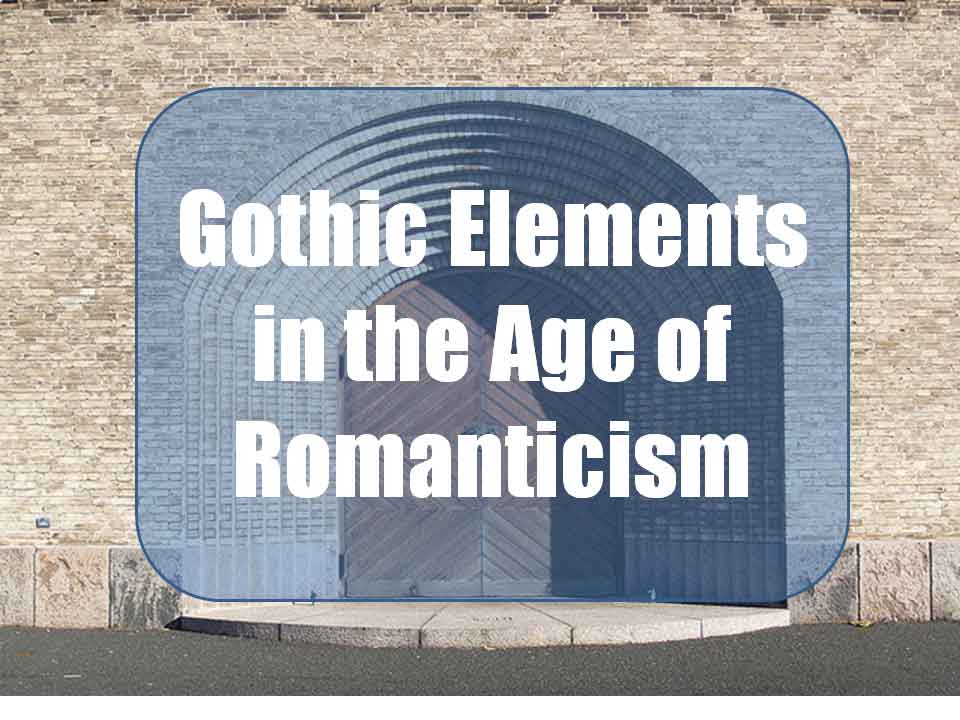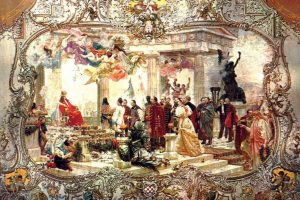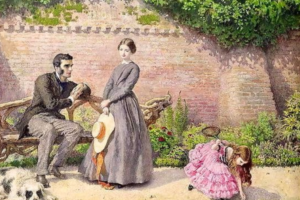
Gothic Elements in the Age of Romanticism
The Age of Romanticism can be seen as a period of transition in terms of the nature and writings of its subject matter. The Romantic imagination of 18th century writings deliberately portrays beauty, imagination and nature in its relation to gothic and sublime. The idea of sublime created in these writings advocated a desire for mysterious and exotic, which in turn perpetuated and popularized the gothic writings.
Most of the writers of Romantic period were particularly influenced by the arrival of ‘gothic’ as a ‘new genre’. The gothic initiated during this period was very different from its use in medieval ages. The new idea of gothic became the other half of nature, imaginations and scenic beauty. ‘The terror’ created by the old gothic writings now created a space for sublime and exotic as an essential aspect of these writings.
The idea of sublime created by the Romantic writers went beyond the beauty of nature and created the feeling of terror and awe within the realms of sublime. In gothic writings of Romantic era, the morbid and supernatural elements are created within the setting of caves, castle, graves and dark landscapes. ‘
The Castle of Otranto’ written in 1764 by Horace Walpole was one of the first and major texts of gothic genre in 18th century. The setting of the novel is in south Italy and the central theme of the text portrays mysterious castles and ghosts infused with life. Clara Reeve’s ‘The Old English Baron’ (1777) and Charlotte Dacre’s ‘The Moor’ (1806) made the idea of gothic more popular. Increased popularity of gothic writings resulted in the parodies of gothic. Jane Austen’s ‘Northanger Abbey’ makes a critical parody of Ann Radcliffe’s ‘The Mysteries of Udolpho’ (1794), Thomas Love Peacock mocks the gothic in ‘Nightmare Abbey’ text written in 1818.
The term ‘gothic’ in 19th century became instrumental in portraying psychological terror and morbid imaginations, Coleridge’s interest in supernatural is manifested in ‘Kubla Khan’ poem, whereas in Keats writings – ‘The Fall of Hyperion’ and ‘La Belle Dam Sans Merci’ – gothic is essentially related to the real world.
The extreme scientific investigation of later ages made the writers to portray dehumanized world through the idea of gothic. The vampires, portrayal of morbid world and the idea of alienation and alchemy became central in the works of writer like Mary Shelly in ‘Frankenstein’ novel.
Frankenstein is the symbol of psychological predicament, discontentment and alienation – these feelings manifested in both monsters and humans. Frankenstein’s monster is morbid in its appearance but in this stream of fiction, we get a new idea of gothic, where a monster is claiming himself to be more miserable beyond all living things. Thus, the extension of gothic to the psychological and social aspects of life has become an essential concept of modern writings, continuing the trend of mystical and exotic writings.




